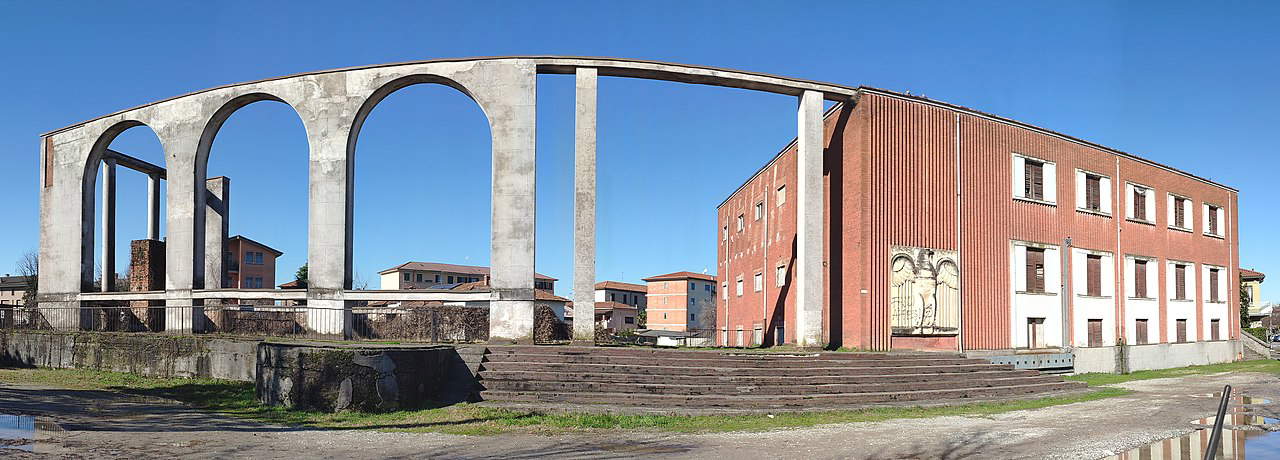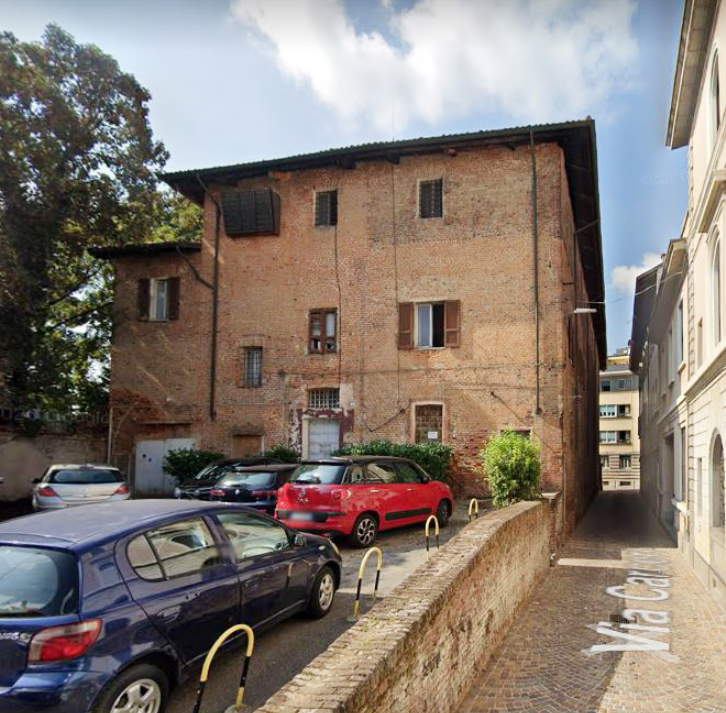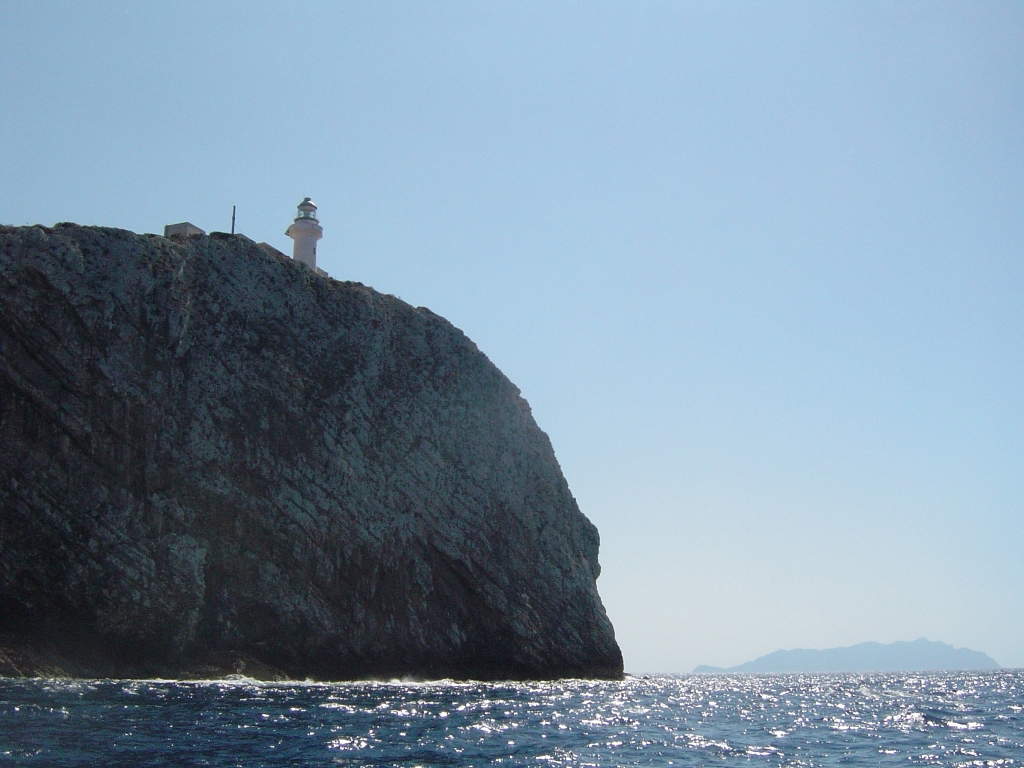A 1380 tower on the promontory of Isola Capo Rizzuto in Calabria, a palace near the Caravaggio Sanctuary near Bergamo, a lighthouse on the island of Levanzo in Sicily, and period villas in Friuli Venezia Giulia and Veneto, former firing ranges or old fascio houses in historic centers. These are some of the state assets that, now disused or abandoned for years, have been put upfor bids through theAgenzia del Demanio for redevelopment. Possibilities for urban regeneration that could tickle the imagination of architects and artists for new and innovative uses, installations and new work, cultural or exhibition facilities. The modality is that of concession to private individuals and third sector entities through public notices published in the Tenders and Auctions section of the Agenzia del Demanio website, and there is time until noon on Dec. 3, 2024, to submit a bid.
The Agenzia del Demanio is the entity entrusted with the care of the state’s real estate assets, with responsibility for administering a portfolio of some 43,000 assets worth 62 billion euros. Among its missions is to create value for the community, and each year, in July and November, it identifies properties that fall under regeneration projects “from an economic, social and cultural point of view, combining the themes of tourism, culture, the environment and soft mobility, stimulating the development of territories.” Based on the characteristics they are divided by type according to 5 categories: Lighthouses Towers Coastal Buildings, Mansions, Walks and Routes, Third Sector Entities and Forts and Fortifications.
“Over the years,” we read, on the Agency’s website, “innovative projects have been selected that are able to rethink the use of unused public heritage, ensuring its protection and public function through new activities, including hospitality, cultural, recreational, sporting, garrison events, territorial discovery, and initiatives related to the promotion of art, culture and local products. Since the Network Projects initiative kicked off in 2015, the agency has concessioned more than 50 properties, many of which are already redeveloped facilities open to the public.”
Specifically, the 18 buildings proposed in July under redevelopment concession/development lease and concession ary concession put out to tender are as follows. In concession/development lease up to a maximum of 50 years: Torre Vecchia in Isola Capo Rizzuto (KR) in Calabria (Forts and Fortifications network); Ex Casa del Fascio in Ardore (RC) in Calabria (Paths and Routes network); Palazzo degli Uffici in Taurianova (RC) in Calabria (Dimore network); Ex Pretura in Serra San Bruno (VV) in Calabria (Paths and Routes network); Villa Tonon in Montereale in Valcellina (PN) in Friuli Venezia Giulia (Dimore network); Former Cesurni farm in Tivoli (RM) in Lazio (Cammini e Percorsi network); Former casa del fascio palace in Caravaggio (BG) in Lombardy (Cammini e Percorsi network); Former Hydraulic Tollhouse in Borgo Virgilio (MN) in Lombardy (Paths and Routes network); Old Prisons Building in Vigevano (PV) in Lombardy (Paths and Routes network); Former Finance Building in Rometta (ME) in Sicily (Paths and Routes network); Former Ammunition Depot in Castronovo di Sicilia (PA) in Sicily (Paths and Routes network); Former GdF Marine Barracks in Avola (SR) in Sicily (Lighthouse Towers Coastal Buildings network); Capo Grosso Lighthouse on the Island of Levanzo in Favignana (TP) in Sicily (Lighthouse Towers Coastal Buildings network); Officers’ Pavilion in Dolcè (VR) in Veneto (Dimore network). Under concession for Third Sector entities: Former Fulmicotone depot in Genoa in Liguria (ETS network); Former national shooting range in Piazza Brembana (BG) in Lombardy (ETS network); Former depot barracks in Novi Ligure (AL) in Piedmont (ETS network); Villa Pasqualigo Pasinetti Rodella in Cinto Euganeo (PD) in Veneto (ETS network). Among these properties let us see in detail some of them.
The Old Tower on the waterfront of the municipality of Isola Capo Rizzuto (in the province of Crotone) from the late 14th century with a land area of 360 square meters was commissioned by Charles III in 1380, was called “Old” to distinguish it from the other “New,” built in the viceregal era. Built with the function of controlling the coast and spotting possible enemy vessels, it is located on a promontory of the Ionian coast. It is erected on a rocky platform at an elevation of about 17 meters above sea level, a large basement with an almost square plan (about 20 meters on each side). From this basement develops the tower proper, with a truncated cone-shaped base and a cylindrical body distinguished from the part below by a tuffaceous torus. Slits and a machicolation are visible on the crowning, the latter, like the torus, being made of tuff. The interior is accessed from the second floor through a chipped opening, which is not accessible at present.

We move on to the province of Pordenone with Villa Tonon, in the locality of San Leonardo, in the municipality of Montereale in Valcellina. The property is an Art Nouveau-style Villa articulated on three levels, the ground floor of which had been used as a pizzeria, consisting also of a building called “barchessa” of recent construction, at the moment left unfinished as well as a large outdoor courtyard. This is compendium from criminal confiscation unsuitable for the instrument of sale for which are assumed as new uses that of exhibitions, excursions, guided tours, involvement of guests in activities and projects for the preservation of the landscape, culture and traditions, local, wellness.

In Genoa we find theformer lightning deposit, which having lost its strategic importance, the compendium was transferred from the Military Administration to the State Administration. Originally, the compendium was of strategic importance to reinforce the defensive works located along the 17th-century city walls protecting the city of Genoa. The irregularly shaped land is sloping with the exception of two flat stretches; on the first of them insist the ruins of some artifacts, now difficult to identify, while on the second, circumscribed by a high stone masonry boundary wall, insist another no. 7 small buildings in mixed stone and brick masonry, rectangular in shape, with a double sloping pitch roof. The Agency in its assessment of opportunity points out that the complex, mainly in its flat portions, has a high potential for development aimed at creating a synergy both with the enhancement of the many defensive works and paths along the “Parco delle Mura,” and with the recovery and enhancement of the former state complex called Caserma Gavoglio.

In Caravaggio, the former Casa Littoria, after the fall of the fascist regime, served as a housing facility during 1945-2004. The asset is located in the immediate vicinity of the tree-lined avenue leading to the Caravaggio Shrine, dedicated to the worship of Santa Maria del Fonte, which attracts numerous tourists and pilgrims every year. The objective of this type of procedure is to enhance the value of assets located along historical-religious and bicycle-pedestrian routes in order to make them services to support the slow traveler and social and cultural animation of the chosen routes. The dimensions are 4975 sq. m. land area: 4975 sq. m., 1337 sq. m. gross area plus 810 sq. m. shrine. It is protected area as an asset of environmental landscape interest, and as hypothetical new uses there are social, cultural, sustainable tourism, land discovery and soft mobility activities l property complex is located in the immediate vicinity of the tree-lined avenue leading to the Caravaggio Shrine-which attracts numerous tourists and pilgrims every year. The L-shaped building has three above-ground floors of about 1,231 square meters of SL and a volume of about 4,730 cubic meters. It is completed by an elevated concrete shrine terrace, characterized by a monumental open-air peristyle of about 800 sq. m. in area, in addition to the appurtenant area

The property is located in the historic center of the municipality of Vigevano, a short distance from the Castello Sforzesco, Piazza Ducale, and the cathedral; the dominant building type is of the multi-family in-line building type, sometimes equipped with a courtyard. The prevailing destination is residential with the presence of public offices and buildings for tertiary and commercial use. The compendium has typology and distribution, as well as construction technique typical of its original function; it is in need of complete renovation/restoration. It is characterized by a main building, developed on three above-ground floors, a single-story accessory building, a courtyard bordered by high perimeter walls, and outdoor area for parking use. Present constraint of artistic and historical interest with hypothesis of new uses: socio-collective activities, museums, tertiary, residential as long as not intensive, receptive and commercial functions limited to neighborhood businesses.

The Capo Grosso Lighthouse on Levanzo was built between 1857 and 1858, has a land area of 935 square meters and a gross area of 310 square meters, is 12 meters high and stands on a promontory about 56 meters above sea level. New uses include a scientific cultural, educational-recreational use, with the possibility of developing a part to be used as guest quarters. A model of tourist-cultural enhancement is proposed mainly related to the themes of sustainable tourism, discovery of the territory and preservation of the landscape. The duration of the concession is commensurate with the achievement of the economic-financial balance of the investment plan and related management, for a period of time, however, not exceeding 50 years. Levanzo is the smallest island of the Egadi Islands, the inhabited center a few houses, an old villa, a lay-by, a bar and a few restaurants near the small port of Cala Dogana. The island has preserved intact its primitive habitat in which valuable flora, especially rock flora, thrives; Capo Grosso is located exactly on the opposite side of the inhabited center, at the ’northern end of the island of Levanzo, isolated with no lighting and a road passable only by an all-terrain vehicle, the coast is precipitous and difficult to access, falling steeply from a plateau grazed and cultivated with vines and cereals. The compendium consists of a main building, from which it is possible to access the cylindrical tower. The site is completed by three other small buildings, one of which is triangular in shape. The site is bordered by low stone walls and has no fences.

Villa Pasqualigo Pasinetto Rodella, in Cinto Euganeo, in the locality of Crosara, in the municipality of Fontanafredda (PD), is a real estate compendium located about 30 km from the center of Padua within the perimeter of the Euganean Hills Regional Park: built between the Bisatto canal and Mount Partizzon, it is accessible by following a paved embankment road that connects the town of Lozzo Atestino with Cinto Euganeo. We are in the 16th century and the complex consists of a villa on three levels, a barchessa on two levels, a small church in an elevated position and some buildings used for storage, warehouses and other services. Built by the late 16th century, it was originally owned by the Pasqualigo patricians, who, after a series of 17th-century renovations, gave it to the Pasinetti family, also Venetian; it then passed to the Paduan Rodella family, which undertook a restoration with major remodeling and an extension. Sold at a judicial auction in 1999, it was purchased by the then regional governor Giancarlo Galan, to whom it was finally confiscated in 2014. among the proposed new uses is that of the organization and management of cultural, artistic or recreational activities of social interest, including activities, including publishing, promotion and dissemination of culture and the practice of voluntary work and activities of general interest; organization and management of tourist activities of social, cultural or religious interest.
 |
| State Property Office publishes notice to regenerate several historic buildings. Here are which ones are |
Warning: the translation into English of the original Italian article was created using automatic tools. We undertake to review all articles, but we do not guarantee the total absence of inaccuracies in the translation due to the program. You can find the original by clicking on the ITA button. If you find any mistake,please contact us.